Geomorphology
Landform
Giant Mountains form a firm mountain range, rising above the Jelenia Góra Valley with a powerful so called High shaft reaching approx. 1400 - 1450 m asl. It extends from Szklarska Pass (886 m.), Dolina Kamienna pass (to the west) through Kowarska Pass (727 meters above sea level) and a Jedlica valley in the east, then turns towards the southeast and ends with Lubawska Pass (511 m). Within its range we can identify a number of smaller units of the specific sculpture, partly referring to the geological structure of the substrate diversity, like for example: Śląski Grzbiet, Czarny Grzbiet, Kowarski Grzbiet i Lasocki Grzbiet. The above division is purely physiographic and therefore refers to the presence of several distinct passes in the main ridge of the Giant Mountains, dividing it into smaller fragments. From the geomorphological point of view we can distinguish following units: the main ridge of generally flat plateau and a gentle slope northern reduction mountainous called Karkonosze middle-mountainous Valley and highly sculptured segmented river valleys Karkonosze foothills.
Silesia ridge is built from granite rocks and extends from the west between Szklarska Pass (886 m asl), and Równia pod Śnieżką (1394 m above sea level). Most of its peak parts are of a flat level surface, from which by the way - most of the Karkonosze peaks emerge. The spine has two main peaks - Great Szyszak (1509 m above sea level) in the western part, and in the eastern - Smogornia (1490 m above sea level).
Between the Śnieżka Pass and the Owl Pass (1164 m above sea level), one can hardly miss Śnieżka - the highest peak of the Karkonosze Mountains (1603 m) and slightly lower - Black Ridge. Further to the east – between of the Owl Pass and the Okraj Pass (1046 m. N.p.m.) there is a Kowarski Ridge. Both ridges are made of metamorphic rocks, mainly hornfels, slate and gneisses.
The sculpture of Karkonosze remains truly unique - as far as the Central Europe and the Middle-Highland of Europe is concerned. Thus because of the incredible richness of the forms of landforming here. That geomorphological appearance of the region is a result of the activity of various processes shaping the surface of the earth here. The main features of today's Karkonosze surface are the effect of two main elements: firstly – they are a result of tectonic block movements in the neogene and quaternary, as a result of which the individual parts of the granite massif and its cover have been raised or lowered; secondly - erosion-denudation processes operating within the raised block and responsible for the formation of a complex system of deep river valleys. The high availability of geomorphological values also determines the general accessibility and legibility of the sculptures in the Karkonosze landscape.
One of the most valuable forms of landscape sculpture are, very characteristic of the Karkonosze landscape, the surfaces of the plateau, located in the highest mountains. These are the relics of the old plain that stretched in the very place of these mountains, before they were overgrown. The largest part of it is the Równia pod Śnieżką. The plateau surface of the equator in the Giant Mountains is unique on a national scale - no other mountain massif has survived with a landscape relict of such a high altitude and of whose main features were formed before the tectonic rise in younger Cenozoic.
On the crests and hills of the Giant Mountains there are numerous picturesquely situated rocks (rocky huts) of truly fantastic shapes, which are otherwise a great tourist attraction, distinguishing the entire area of the Giant Mountains from other Polish and European mountains. In the range of the Karkonosze National Park and its buffer zone 936 objects of this sort have been registered. Most of the rocks occur in the altitudes 500-600 and 600-700 m asl., and 1000-1100 m asl. The most famous and accessible tourist trails in the Karkonosze Mountains are Pielgrzymy, Słonecznik, Śląskie Kamienie, Czeskie Kamienie, Twarożnik, Trzy Świnki i Końskie Łby. One can observe there an interesting form of micro-sculpture, called “decay cauldrons”. Biggest of which can be admired on the booths on the slopes of Drewniak (672 m asl.) near Michalowice - it reaches a width of almost 1.5 m.
As far as the tourism is concerned of most attractive remain forms of sculptures that include waterfalls, which in the very place have a somewhat different genesis. The most famous is the Szklarka Waterfall, Podgorna Waterafll and one of the highest waterfalls in Poland, reaching the height of 27 meters Kamieńczyk Waterfall.
In the Karkonosze Mountains there are can also observe the forming processes molds of peripatetic structures, inherited from the Pleistocene, and formed by the frost sorting. The inventory of these forms includes boulder-block covers (including the Great Szyszak and Sniezka), rocky peaks (among others on the Black Ridge), relict lava tongs, rubble belts and the initial form of rubble glaciers.
Moderately new forms which can be found among the elements of Polish Karkonosze sculptures are those associated with karst phenomena. In recent years, three karst caves have been discovered in the Kowarski and Lasocki Ridge areas - two in crystalline limestone quarries and one in the former "Liczyrzepa" fluorite mine. This demonstrates that these facilities have been already known to former miners and mine managers, alas people of those days undoubtedly failed to report them, thus they remained unknown for succeeding generations.
Silesia ridge is built from granite rocks and extends from the west between Szklarska Pass (886 m asl), and Równia pod Śnieżką (1394 m above sea level). Most of its peak parts are of a flat level surface, from which by the way - most of the Karkonosze peaks emerge. The spine has two main peaks - Great Szyszak (1509 m above sea level) in the western part, and in the eastern - Smogornia (1490 m above sea level).
Between the Śnieżka Pass and the Owl Pass (1164 m above sea level), one can hardly miss Śnieżka - the highest peak of the Karkonosze Mountains (1603 m) and slightly lower - Black Ridge. Further to the east – between of the Owl Pass and the Okraj Pass (1046 m. N.p.m.) there is a Kowarski Ridge. Both ridges are made of metamorphic rocks, mainly hornfels, slate and gneisses.
The sculpture of Karkonosze remains truly unique - as far as the Central Europe and the Middle-Highland of Europe is concerned. Thus because of the incredible richness of the forms of landforming here. That geomorphological appearance of the region is a result of the activity of various processes shaping the surface of the earth here. The main features of today's Karkonosze surface are the effect of two main elements: firstly – they are a result of tectonic block movements in the neogene and quaternary, as a result of which the individual parts of the granite massif and its cover have been raised or lowered; secondly - erosion-denudation processes operating within the raised block and responsible for the formation of a complex system of deep river valleys. The high availability of geomorphological values also determines the general accessibility and legibility of the sculptures in the Karkonosze landscape.
One of the most valuable forms of landscape sculpture are, very characteristic of the Karkonosze landscape, the surfaces of the plateau, located in the highest mountains. These are the relics of the old plain that stretched in the very place of these mountains, before they were overgrown. The largest part of it is the Równia pod Śnieżką. The plateau surface of the equator in the Giant Mountains is unique on a national scale - no other mountain massif has survived with a landscape relict of such a high altitude and of whose main features were formed before the tectonic rise in younger Cenozoic.
On the crests and hills of the Giant Mountains there are numerous picturesquely situated rocks (rocky huts) of truly fantastic shapes, which are otherwise a great tourist attraction, distinguishing the entire area of the Giant Mountains from other Polish and European mountains. In the range of the Karkonosze National Park and its buffer zone 936 objects of this sort have been registered. Most of the rocks occur in the altitudes 500-600 and 600-700 m asl., and 1000-1100 m asl. The most famous and accessible tourist trails in the Karkonosze Mountains are Pielgrzymy, Słonecznik, Śląskie Kamienie, Czeskie Kamienie, Twarożnik, Trzy Świnki i Końskie Łby. One can observe there an interesting form of micro-sculpture, called “decay cauldrons”. Biggest of which can be admired on the booths on the slopes of Drewniak (672 m asl.) near Michalowice - it reaches a width of almost 1.5 m.
As far as the tourism is concerned of most attractive remain forms of sculptures that include waterfalls, which in the very place have a somewhat different genesis. The most famous is the Szklarka Waterfall, Podgorna Waterafll and one of the highest waterfalls in Poland, reaching the height of 27 meters Kamieńczyk Waterfall.
In the Karkonosze Mountains there are can also observe the forming processes molds of peripatetic structures, inherited from the Pleistocene, and formed by the frost sorting. The inventory of these forms includes boulder-block covers (including the Great Szyszak and Sniezka), rocky peaks (among others on the Black Ridge), relict lava tongs, rubble belts and the initial form of rubble glaciers.
Moderately new forms which can be found among the elements of Polish Karkonosze sculptures are those associated with karst phenomena. In recent years, three karst caves have been discovered in the Kowarski and Lasocki Ridge areas - two in crystalline limestone quarries and one in the former "Liczyrzepa" fluorite mine. This demonstrates that these facilities have been already known to former miners and mine managers, alas people of those days undoubtedly failed to report them, thus they remained unknown for succeeding generations.


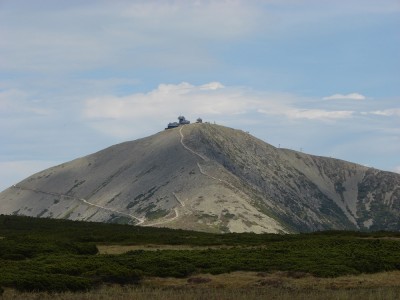
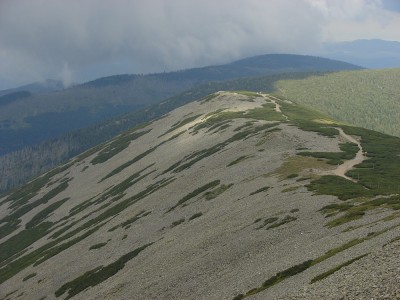
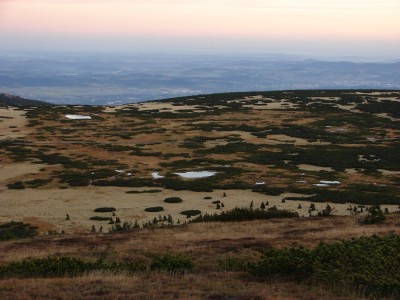
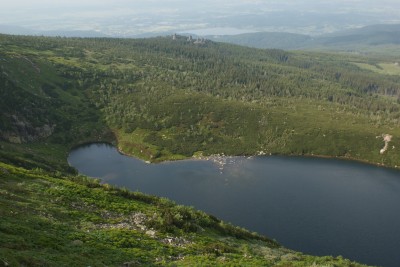
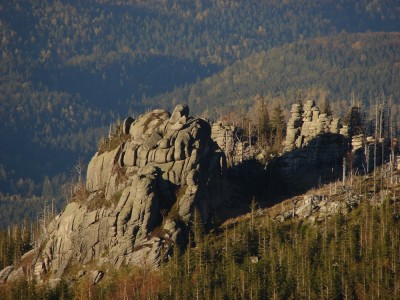
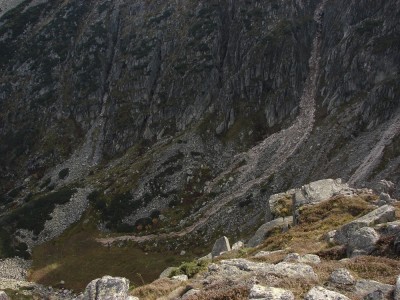
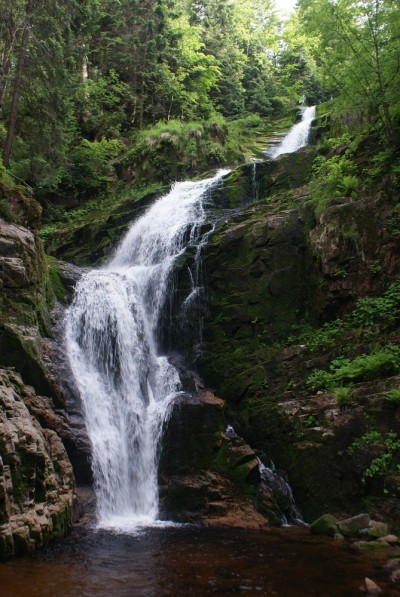
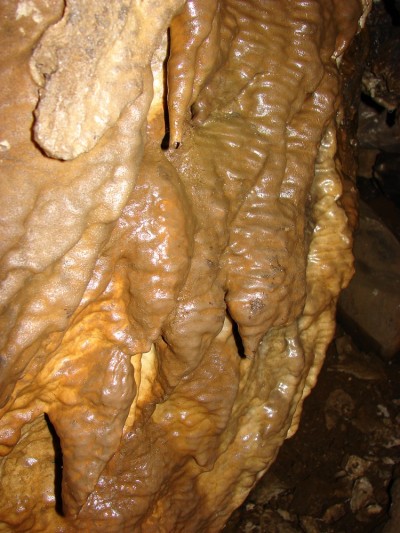
 Public Information Bulletin
Public Information Bulletin





